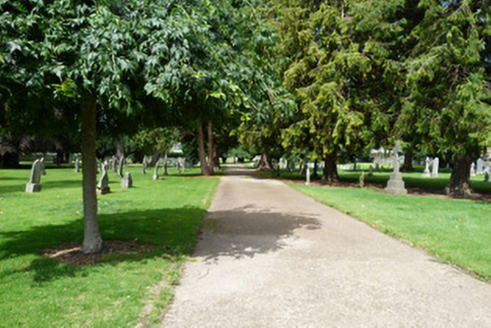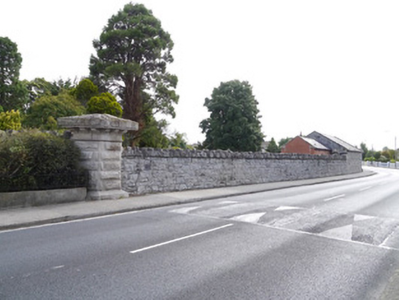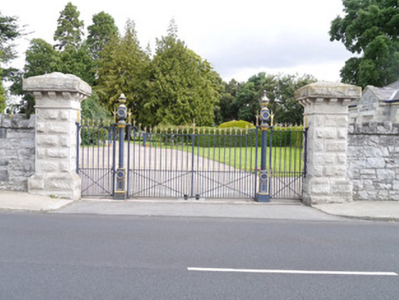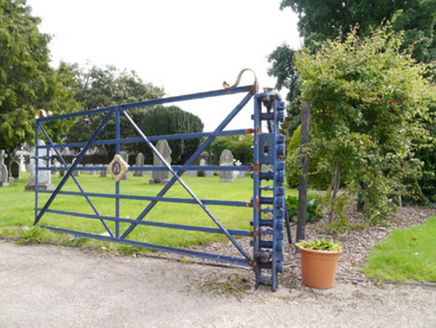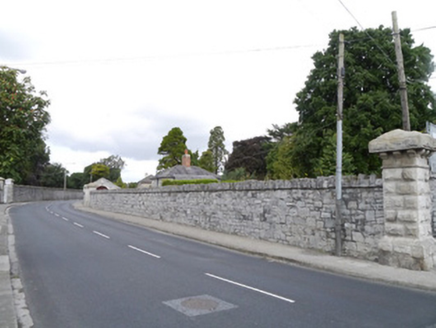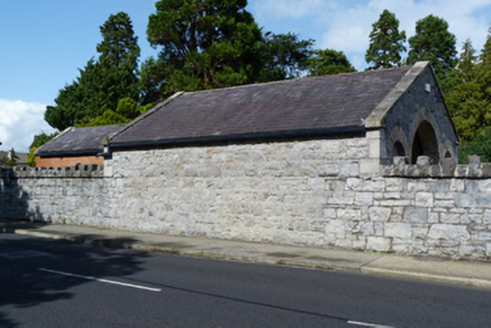Survey Data
Reg No
50060151
Rating
Regional
Categories of Special Interest
Architectural, Social
Original Use
Graveyard/cemetery
Date
1870 - 1880
Coordinates
312830, 235669
Date Recorded
24/09/2014
Date Updated
--/--/--
Description
Grangegorman Military Cemetery was established c.1875. Variety of different head stones to grounds. Boundary of squared limestone rubble walling, built to courses, topped by stepped limestone soldier coping. To west of entrance gates, wall rises to form rear elevation of gate lodge located along inner boundary. Large feather-edged rock-faced limestone piers terminate wall at both ends and support gates to centre. Each has chamfered plinth, overhanging coping stones supported on corbel brackets. Wrought-iron vehicular gates flanked by matching pedestrian gates, supported on two decorative barley-twist cast-iron piers with panelled pedestals and finials. Replacement aluminium lamps on original cast-iron standards are set immediately inside boundary in front of main gates. Simple original field gate with central military motif leads into main cemetery area flanked by hedged inner enclosure. Outbuilding, built c.1880, attached to southern boundary wall, having pitched slate roof with cut limestone copings and profile cast-iron gutters, rendered long walls with two cast-iron columns inset to north elevation, three-bay snecked rusticated limestone to front (east), south and west elevations with dressed granite quoins, round-headed openings to entrance gable with timber door flanked by blind openings; two-bay single-storey brick-walled addition to west.
Appraisal
The graveyard, which opened in 1876, is the largest military cemetery in Ireland. Despite its relative anonymity following Independence, it is of considerable significance, as the final resting place of soldiers from Ireland and Britain who died while on service. The cemetery forms an interesting group with the gate lodge and outbuilding. The finely constructed limestone boundary wall forms a prominent feature on Blackhorse Avenue along the north-east side of Phoenix Park.
